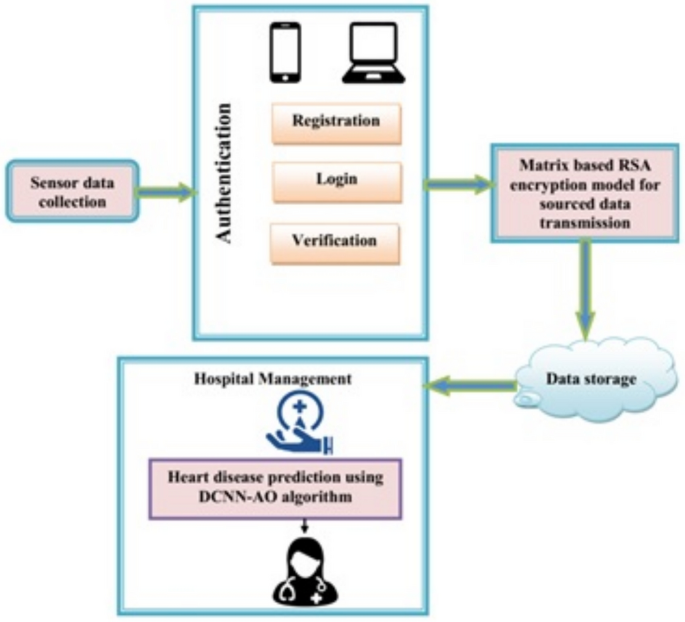Key Takeaways
- The proposed IoT-based model for heart disease prediction utilizes a combination of multiple sensors and advanced machine learning techniques for enhanced accuracy.
- Performance evaluations indicate that the model demonstrates superior encryption, decryption times, and security compared to traditional methods.
- Incorporating patient-reported outcomes improves the model’s personalization and predictive capabilities, ensuring better health management.
The proposed approach leverages IoT technology and machine learning to enhance heart disease prediction through real-time monitoring and data analysis. Utilizing Ganache’s blockchain for secure transactions and Metamask for Ethereum connectivity, patient records are uploaded to a connected IPFS node. The implementation employs Python 3.5 with Keras for model construction.
The model integrates data from various IoT sensors, including an accelerometer, ECG devices, and blood pressure monitors. By combining physiological measurements with patient-reported outcomes (PROs) via mobile interfaces, the model aims to improve prediction accuracy through enhanced personalization. PROs encompass aspects like medication adherence and lifestyle behaviors, allowing the system to adapt based on individual health indicators.
Additionally, the model can incorporate adaptive feedback loops to adjust prediction thresholds based on real-time patient inputs, helping to rectify issues related to false positives. The Archimedes Optimization (AO) algorithm plays a crucial role in optimizing the predictive capabilities of the model by dynamically adjusting features based on patient-specific data.
The model’s implementation utilizes the Cleveland Heart Disease database, analyzing various techniques—including Random Forest and Deep Learning methods—for comparative analysis. Significant metrics for performance evaluation include accuracy, precision, recall, and F1-measure, which validate the model’s effectiveness in predicting heart disease.
Further assessments reveal that the IoT framework provides enhanced security with a 98% security level, improved encryption and decryption times, and superior performance compared to existing methods. For instance, the model achieves lower decryption times even with an increased number of sensor nodes, marking improvements alongside substantial reductions in latency.
Advantages of the DCNN-AO approach are highlighted, showing its superior ability to classify heart diseases reliably. Graphical representations, such as confusion matrices and ROC curves, depict the model’s effectiveness across different datasets and monitoring durations, ensuring robust performance.
Moreover, this adaptable model accommodates a diverse range of biomedical signals, facilitating real-time monitoring for multiple diseases. Continuous advancements embodying multi-input architectures ensure optimized disease classification, allowing healthcare providers to deliver timely interventions based on accurate predictive analytics.
Through these innovations, it aims to significantly enhance cardiac health management, contributing to broader efforts in preventive healthcare and personalized medicine.
The content above is a summary. For more details, see the source article.















